Natural remedies like tea tree oil have surged in popularity over the years. Advocates claim this essential oil can cure everything from acne to dandruff to athlete's foot. But is […]
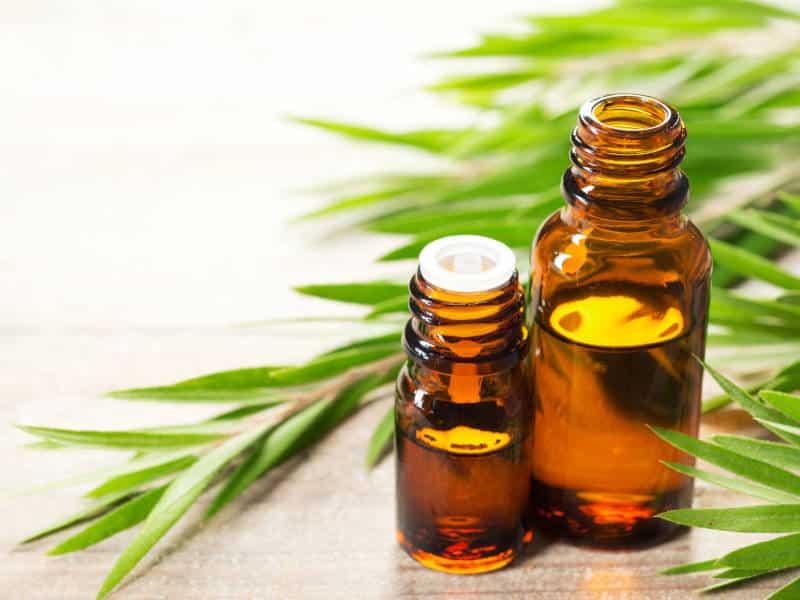
Natural remedies like tea tree oil have surged in popularity over the years. Advocates claim this essential oil can cure everything from acne to dandruff to athlete's foot.
But is there any science to support these claims?
In this post, we'll dive into the medical literature on tea tree oil to separate facts from fiction.
You'll learn some amazing things like:
- The origin of tea tree oil,
- Its unique chemical profile,
- Its antibacterial, antiviral, and antifungal properties, and
- 15 incredible uses of tea tree oil for your skin
Keep reading to learn more about this popular essential oil!
What Is Tea Tree Oil?
Tea tree oil is an essential oil derived from the Melaleuca alternifolia tree in Australia. It's well-known for having potent antiseptic and anti-inflammatory properties.
For centuries, Australian Aborigines used tea tree leaves to treat common illnesses like coughs, colds, and minor wounds. (1)
More recently, tea tree oil has become a popular home remedy for many skin conditions, thanks to a growing interest in natural and alternative medicine.
Origin
According to folk tales, European sailors in the 18th century named the Melaleuca tree the "tea tree" after brewing cups of tea with its leaves. Hence the origin of "tea" tree oil. (2)
History
Tea tree oil has been produced in Australia since the 1920s. Today, the country accounts for over 80% of global volume, most of which is exported to Europe and North America. (3)
Extraction
A process known as steam distillation is used to extract the oil from the leaves and branches of Melaleuca alternifolia trees. This results in a highly concentrated "essence" or essential oil.
Chemical Composition
Scientists have discovered over 100 chemical compounds in tea tree oil. (4)
According to ISO 4730, the principal components are:
- terpinen-4-ol: 35-48%
- γ-terpinene: 14-28%
- α-terpinene: 6-12%
- 1,8-cineole: trace-10%
The main ingredient, terpinen-4-ol, accounts for almost half of the oil and is responsible for most of its antimicrobial and anti-inflammatory benefits. (1)
Benefits of Tea Tree Oil
Advocates believe that tea tree oil can address a wide range of common ailments such as acne, sore throat, nail fungus, dandruff, and even cold sores.
In order to verify these claims, we need to examine the unique properties of tea tree oil, which can be summarzied as:
- Antibacterial
- Antifungal
- Antiviral
- Anti-inflammatory
Antibacterial
Early studies on tea tree oil focused on its antibacterial activity. Today, we know that tea tree oil can limit or kill multiple species of bacteria at a concentration of 1% or lower. (1)
Notable examples include:
- Escherichia coli (E. Coli): often associated with food poisoning
- Porphyromonas gingivalis: responsible for gum disease (gingivitis)
- Propionibacterium acnes (P. Acnes): one of the key causes of acne
- Staphylococcus aureus: responsible for staph infections
- Methicillin-resistant S. aureus (MRSA): antibiotic-resistant "super bug"
- Streptococcus pyogenes: causes strep throat
Why is tea tree oil such a potent antibacterial agent?
Researchers believe the chemical components of tea tree oil, such as terpinen-4-ol, are able to penetrate bacteria cells and disrupt vital functions, which can eliminate bacteria or prevent them from spreading.
Antifungal
Further research has discovered that tea tree oil can remove fungal infections, including yeasts, dermatophytes, and filamentous fungi. (1)
Notable examples include:
- Candida albicans: responsible for oral and vaginal yeast infections
- Epidermophyton flocossum: causes athlete's foot and nail fungus
- Malassezia furfur: associated with seborrhoeic dermatitis
- Penicillium: a species of fungi that produces penicillin
- Saccharomyces cerevisiae: the type of yeast used for baking and alcohol
Similar to bacteria, researchers believe that tea tree oil destroys fungi by interfering with vital cell functions.
Antiviral
The first antiviral study on tea tree oil examined tobacco plants and the tobacco mosaic virus. The authors noted that plants sprayed with tea tree oil exhibited fewer virus symptoms compared to the control group. (5)
A second study found that tea tree oil could prevent herpes simplex virus (cold sores). At a 0.003% concentration, tea tree oil inhibited HSV-1 by 98.2% and HSV-2 by 93.0%. (6)
Anti-inflammatory
Finally, many studies support tea tree oil's anti-inflammatory abilities.
Researchers at Flinders University found that tea tree oil significantly reduced proinflammatory cytokines (chemical signals that promote inflammation). (7)
Further studies showed that tea tree oil can reduce redness and swelling associated with histamine-induced inflammation and nickel-induced contact dermatitis. (8, 9)
15 Incredible Uses of Tea Tree Oil
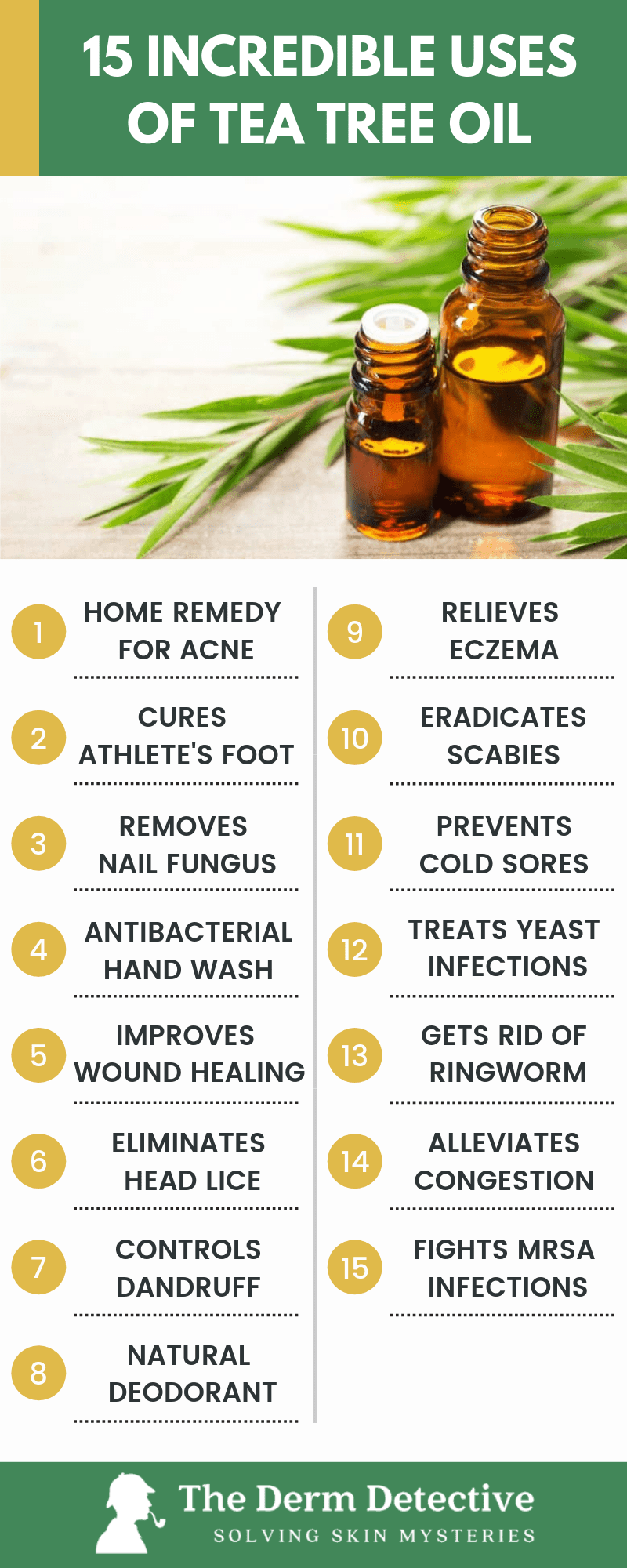
1. Home Remedy for Acne
Acne is an inflammatory skin disease caused by excess sebum and uncontrolled P. Acnes bacteria growth.
Fortunately, tea tree oil is an excellent natural remedy that works in two ways:
- Antibacterial: it keeps P. Acnes bacteria under control, and
- Anti-inflammatory: it reduces redness and skin irritation
In one study, researchers at the Royal Prince Alfred Hospital compared 5% tea tree oil to 5% benzoyl peroxide in a single-blinded, randomized trial of 124 patients.
They discovered that tea tree oil was equally effective at reducing acne lesions, albeit at a slower rate. Patients using tea tree oil also reported fewer side effects. (10)
In another study, 60 patients were assigned to either 5% tea tree oil or a placebo treatment. The researchers found that tea tree oil was 3.5x more effective than placebo at decreasing acne lesions and almost 6x better at improving acne severity. (11)
"Tea tree oil is a great natural remedy for acne."
2. Cures Athlete's Foot
Athlete's foot is a fungal infection of the feet (tinea pedis). It's spread by several types of fungi that survive in swimming pools and locker rooms.
Fungal infections are contagious so make sure to wash your hands (and feet) after visiting a gym or pool.
Topical antifungal creams such as 1% clotrimazole are considered standard treatment, but studies suggest that tea tree oil might also be a cure.
A 1992 study compared 10% tea tree oil, 1% tolnaftate (antifungal agent), and a placebo cream in a double-blinded, randomized trial of 104 patients.
The authors found that 10% tea tree oil reduced patient symptoms in line with 1% tolnaftate. However, tea tree oil was no better than the placebo at eliminating the fungal infection.
By the end of the trial, 85% of patients using 1% tolnaftate were cured compared to just 30% for tea tree oil and 21% for placebo. (12)
A follow-up study in 2002 compared 25% and 50% tea tree oil with a placebo for 158 patients. After 4 weeks of treatment, 72% of the 50% group and 68% of the 25% group were completely cured, compared to 31% in the placebo group. (13)
Clinical results are mixed but points to a potential role for tea tree oil in treating athlete's foot. Researchers noted that the sorbolene vehicle in the first study may have compromised the oil's antifungal properties. (1)
"Tea tree oil is antifungal and may help with athlete's foot."
3. Removes Nail Fungus
Some studies show that tea tree oil can remove bothersome nail fungus (onychomycosis).
Researchers at the University of Rochester conducted a double-blinded, randomized trial of 117 patients who were assigned to use either 100% tea tree oil or 1% clotrimazole (antifungal agent).
By the end of the study, 18% of the tea tree oil group was completely cured compared to 11% of the clotrimazole group. Clinical assessments showed that 60% of the former group had partial or full resolution compared to 61% of the latter group. (14)
Separately, researchers at the University of California asked patients to use either 5% tea tree oil, 5% tea tree oil plus 2% butenafine hydrochloride, or a placebo. The cure rate for 5% tea tree oil alone was 0% compared to 80% for the combined 5% tea tree oil and 2% butenafine chloride. (15)
Once again, the clinical results are a bit mixed. This highlights the limited data we have on natural remedies and the need for further studies.
Since nail fungus is contagious, make sure to thoroughly wash your hands to avoid spreading the infection.
"Tea tree oil has shown mixed results for nail fungus."
4. Antibacterial Hand Wash
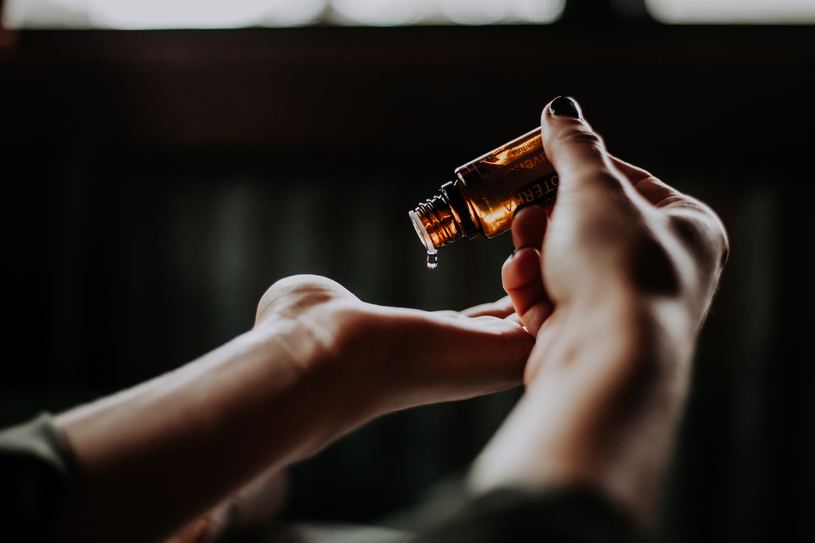
Speaking of washing your hands, tea tree oil makes a great addition to soap or as your own DIY hand wash.
Its antiseptic properties make it an excellent hand sanitizer that kills common bacteria like E. Coli.
One study found that handwashes with 5% tea tree oil were more effective against E. Coli. and also increased handwashing compliance compared to regular soap. (16)
"Tea tree oil is an amazing addition to your regular hand wash."
5. Improves Wound Healing
Some studies indicate tea tree oil can actually accelerate the wound healing process.
In one study, patients with acute radiation skin reactions were treated with either a tea tree oil infused hydrogel dressing or a conventional dressing. The tea tree oil group achieved slightly better results and it also provided a cooling effect which patients found beneficial. (17)
A follow-up study in 2013 noted that patients with staph infections recovered faster using wound dressings coated with tea tree oil fumes. This suggests the oil could be an effective natural healing agent. (18)
For minor cuts and scrapes, try adding a few drops of tea tree oil to the bandage to disinfect the wound and speed up your recovery.
"Tea tree oil may improve wound healing and reduce the risk of infection."
6. Eliminates Head Lice
Lice are tiny parasites that feed on your blood. They are easily spread by close contact, especially among schoolchildren.
Tea tree oil has been proposed as a potential treatment for lice given its antimicrobial properties.
Tea tree oil has been proposed as a potential treatment for lice given its antimicrobial properties.
One study published in Parasitology Research found that 1% tea tree oil killed head lice within 30 minutes. The authors also showed that 0.5% tea tree oil with 1% nerolidol effectively eliminated both lice and lice eggs. (19)
"Preliminary data shows tea tree oil can eradicate head lice."
7. Controls Dandruff
You probably know about dandruff already, thanks to the millions spent each year on shampoo ads.
Research shows that dandruff might be caused by an overactive yeast (Pityrosporum ovale). Tea tree oil is naturally antifungal and may help control dandruff.
In a 2002 study, researchers tested a 5% tea tree oil shampoo against a placebo in a single-blinded trial with 126 patients. The tea tree oil group reported a 41% reduction in dandruff severity and significant improvement in patient self-assessments of itchiness and greasiness. (20)
"Tea tree oil shampoo is very effective for reducing dandruff."
8. Natural Deodorant
Tea tree oil's antibacterial properties also makes it an awesome natural deodorant. The plant oil has a strong medicinal smell that can mask unpleasant body odors.
Contrary to popular belief, body odor is not caused by excessive sweat. It's actually the combination of chemicals in your sweat and bacteria living on your skin that creates bad BO.
"Tea tree oil kills the bacteria responsible for body odors."
9. Relieves Eczema
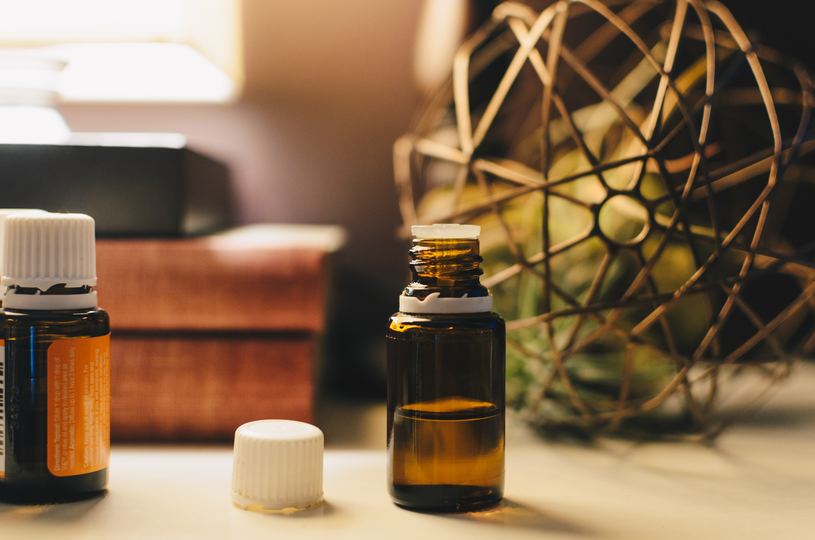
Eczema is an inflammatory skin disease characterized by red patches of dry skin and relentless itching. Some believe tea tree oil's anti-inflammatory properties could help relieve eczema symptoms.
One study in 2011 discovered that tea tree oil reduced contact dermatitis, a form of eczema, by 40.5% compared to 23.5% for clobetasone butyrate and 17.4% for zinc oxide.
This points to a strong role for tea tree oil in treating eczema. (21)
"Tea tree oil can help relieve itchiness and redness associated with eczema."
10. Eradicates Scabies
According to the American Academy of Dermatology, scabies is an infestation caused by tiny mites (Sarcoptes scabiei) that live on the skin.
When these mites burrow and lay eggs, the skin breaks out in extremely itchy rashes.
Some think tea tree oil could be used for scabies, particularly as mites are developing resistance to conventional therapy.
A study at Flinders University found that 5% tea tree oil and its primary component, terpinen-4-ol, was "highly effective in reducing mite survival times". (22)
"Tea tree oil may help with scabies."
11. Prevents Cold Sores
Tea tree oil can prevent and even cure recurrent cold sores.
Studies show that tea tree oil inhibits herpes simplex virus 1, which is responsible for cold sores. At a concentration of 0.003%, tea tree oil inhibited HSV-1 by 98.2%. (6)
"Tea tree oil can effectively inhibit HSV-1 (cold sores)."
12. Treats Yeast Infections
The fungi Candida albicans is often responsible for oral and vaginal yeast infections (also called thrush).
Tea tree oil is naturally fungicidal and may help eliminate yeast infections.
Clinical results have been mixed. Early studies showed that tea tree oil was toxic to Candida albicans. (1)
More recent studies, however, suggest it is only effective at certain concentrations against certain fungi, or when combined with conventional treatment. (23)
"Tea tree oil may help with yeast infections but the clinical evidence is mixed."
13. Gets Rid of Ringworm
Ringworm is a common fungal infection related to athlete's foot and nail fungus. It has a characteristic red circular shape and may feel itchy.
Since there is good evidence that tea tree oil works for fungal infections, it's believed that it would also work on ringworm. (12, 14)
"Tea tree oil is antifungal and may help with ringworm."
14. Alleviates Congestion
For hundreds of years, Australian Aborigines used tea tree leaves for coughs and colds.
The next time you feel under the weather, try adding a few drops of tea tree oil to a hot bath to relieve congestion and cold symptoms.
You can also use an essential oil diffuser to kill pathogens in the air and help you breathe more easily.
"Try adding tea tree oil to your bath or essential oil diffuser."
15. Fights MRSA Infections
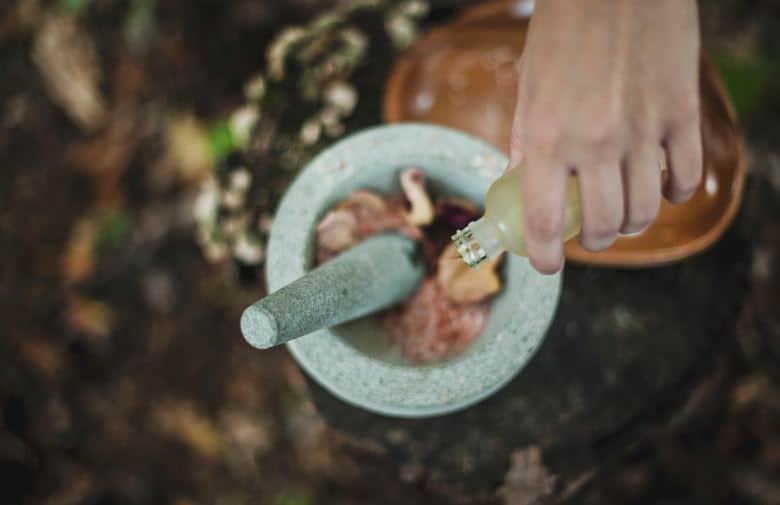
Antibiotic-resistant super bugs like methicillin-resistant Staphylococcus aureus (MRSA) are a growing concern around the world.
Much of the research into tea tree oil has explored its potential to replace conventional antibiotics.
Researchers at the University of Western Australia oversaw an 18-month study of 180 hospital patients.
Half the group used tea tree oil-based body wash and creams while the other half used routine treatments.
By the end of the trial, 21% of the tea tree oil group were no longer infected compared to 23% of those who underwent routine treatment. (3)
"Tea tree oil can kill super bugs like MRSA and reduce dependency on conventional antibiotics."
Safety Tips for Tea Tree Oil
All essential oils are highly potent and may cause severe damage if used incorrectly.
Skin irritation is the most common complaint. Avoid using the oil neat (undiluted) as this frequently causes irritation and sensitivity.
Researchers believe oxidized tea tree oil is the main reason for adverse reactions. Exposure to air, light, and heat cause tea tree oil to oxidize so make sure you discard opened bottles after 12 months.
DO NOT DRINK TEA TREE OIL.
It is poisonous if taken orally. There have been cases of accidental poisoning but no deaths have been reported. Keep tea tree oil stored away from children and pets.
The incidence of severe side effects has been low (less than 0.0016%) according to the Australian Tea Tree Industry Association. (3)
How to Use Tea Tree Oil
You'll almost always want to dilute tea tree oil before using to avoid skin irritation.
Carrier oils such as jojoba oil are a good choice. Aloe vera and honey are also recommended for additional anti-inflammatory benefits.
Before trying any DIY recipes, do a patch test first to check if your skin reacts to tea tree oil.
Remember, just because it's "natural" doesn't mean it can't damage your skin or body.
How to Buy Tea Tree Oil
Here are some tips on buying a high quality tea tree oil:
- Look for 100% tea tree oil on the label (sometimes it's blended with other essential oils)
- Check the place of origin (Australia produces the best quality)
- Choose a dark tinted bottle that will prevent oxidation
- Find a supplier that provides GC/MS test results for their products. This is a chemical analysis of the oil by a reputable third-party lab that verifies its authenticity.
- Look for a high concentration of terpinen-4-ol (30-40% should be fine). This component provides most of the antiseptic and anti-inflammatory properties
- Look for a low level of 1,8-cineole (less than 7%)
Keep in mind that tea tree oil oxidizes over time so it's best to use the oil within 12 months of opening.
References
- Carson, C. F., Hammer, K. A., & Riley, T. V. (2006). Melaleuca alternifolia (Tea Tree) Oil: A Review of Antimicrobial and Other Medicinal Properties. Clinical Microbiology Reviews. https://www.ncbi.nlm.nih.gov/pmc/articles/PMC1360273/
- Tea Tree Oil: Uses, Side Effects, Interactions, Dosage, and Warning. (n.d.). Retrieved from https://www.webmd.com/vitamins/ai/ingredientmono-113/tea-tree-oil
- The Effectiveness and Safety of Australian Tea Tree Oil (Rep.). (2007). Retrieved January 26, 2019, from Australian Government Rural Industries Research and Development Corporation website: https://www.agrifutures.com.au/wp-content/uploads/publications/07-143.pdf
- Brophy, J. J., N. W. Davies, I. A. Southwell, I. A. Stiff, and L. R. Williams (1989). Gas chromatographic quality control for oil of Melaleuca terpinen-4-ol type (Australian tea tree). Journal of Agricultural and Food Chemistry. https://pubs.acs.org/doi/abs/10.1021/jf00089a027
- Bishop, C. D. (1995). Antiviral activity of the essential oil of Melaleuca alternifolia (Maiden & Betche) Cheel (tea tree) against tobacco mosaic virus. Journal of Essential Oil Research. https://www.tandfonline.com/doi/abs/10.1080/10412905.1995.9700519
- Schnitzler, P., K. Schön, and J. Reichling (2001). Antiviral activity of Australian tea tree oil and eucalyptus oil against herpes simplex virus in cell culture. Pharmazie. https://www.ncbi.nlm.nih.gov/pubmed/11338678
- Hart, P. H., C. Brand, C. F. Carson, T. V. Riley, R. H. Prager, and J. J. Finlay-Jones (2000). Terpinen-4-ol, the main component of the essential oil of Melaleuca alternifolia (tea tree oil), suppresses inflammatory mediator production by activated human monocytes. Inflammation Research. https://www.ncbi.nlm.nih.gov/pubmed/11131302/
- Koh, K. J., A. L. Pearce, G. Marshman, J. J. Finlay-Jones, and P. H. Hart (2002). Tea tree oil reduces histamine-induced skin inflammation. British Journal of Dermatology. https://www.ncbi.nlm.nih.gov/pubmed/12452873/
- Pearce, A., J. J. Finlay-Jones, and P. H. Hart (2005). Reduction of nickel-induced contact hypersensitivity reactions by topical tea tree oil in humans. Inflammation Research. https://www.ncbi.nlm.nih.gov/pubmed/15723201/
- Bassett, I. B., D. L. Pannowitz, and R. S. Barnetson (1990). A comparative study of tea-tree oil versus benzoyl peroxide in the treatment of acne. Medical Journal of Australia. https://www.ncbi.nlm.nih.gov/pubmed/2145499
- Jooya, A., Siadat, A., Iraji, F., & Enshaieh, S. (2007). The efficacy of 5% topical tea tree oil gel in mild to moderate acne vulgaris: A randomized, double-blind placebo-controlled study. Indian Journal of Dermatology, Venereology and Leprology. https://www.ncbi.nlm.nih.gov/pubmed/17314442
- Tong, M. M., P. M. Altman, and R. S. Barnetson (1992). Tea tree oil in the treatment of tinea pedis. Australasian Journal of Dermatology. https://www.ncbi.nlm.nih.gov/pubmed/1303075
- Satchell, A. C., A. Saurajen, C. Bell, and R. S. Barnetson (2002). Treatment of interdigital tinea pedis with 25% and 50% tea tree oil solution: a randomized, placebo controlled, blinded study. Australasian Journal of Dermatology. https://www.ncbi.nlm.nih.gov/pubmed/12121393
- Buck, D. S., D. M. Nidorf, and J. G. Addino (1994). Comparison of two topical preparations for the treatment of onychomycosis: Melaleuca alternifolia (tea tree) oil and clotrimazole. Journal of Family Practice. https://www.ncbi.nlm.nih.gov/pubmed/8195735
- Syed, T. A., Z. A. Qureshi, S. M. Ali, S. Ahmad, and S. A. Ahmad (1999). Treatment of toenail onychomycosis with 2% butenafine and 5% Melaleuca alternifolia (tea tree) oil in cream. Tropical Medicine and International Health. https://www.ncbi.nlm.nih.gov/pubmed/10357864
- Messager, S., Hammer, K., Carson, C., & Riley, T. (2005). Effectiveness of hand-cleansing formulations containing tea tree oil assessed ex vivo on human skin and in vivo with volunteers using European standard EN 1499. Journal of Hospital Infection. https://www.ncbi.nlm.nih.gov/pubmed/15694979/
- Tea Tree / Hydrogel Dressings Used in Wound Care (Rep.). (2005). Retrieved January 27, 2019, from Australian Government Rural Industries Research and Development Corporation website: https://www.agrifutures.com.au/wp-content/uploads/publications/05-114.pdf
- Chin, K. B., & Cordell, B. (2013). The Effect of Tea Tree Oil (Melaleuca alternifolia) on Wound Healing Using a Dressing Model. The Journal of Alternative and Complementary Medicine. https://www.ncbi.nlm.nih.gov/pubmed/23848210
- Campli, E. D., Bartolomeo, S. D., & Pizzi, P. D. (2012). Activity of tea tree oil and nerolidol alone or in combination against Pediculus capitis (head lice) and its eggs. Parasitology Research. https://www.ncbi.nlm.nih.gov/pubmed/22847279
- Satchell, A. C., Saurajen, A., Bell, C., & Barnetson, R. S. (2002). Treatment of dandruff with 5% tea tree oil shampoo. Journal of the American Academy of Dermatology. https://www.ncbi.nlm.nih.gov/pubmed/12451368
- Wallengren, J. (2011). Tea tree oil attenuates experimental contact dermatitis. Archives of Dermatological Research. https://www.ncbi.nlm.nih.gov/pubmed/20865268
- Walton, S.f., Mckinnon, M., Pizzutto, S. (2004). Acaricidal activity of Melaleuca alternifolia (tea tree) oil: in vitro sensitivity of sarcoptes scabiei var hominis to terpinen-4-ol. Archives of Dermatology. https://www.ncbi.nlm.nih.gov/pubmed/15148100
- Can You Use Tea Tree Oil for a Yeast Infection? (n.d.). Retrieved from https://www.healthline.com/health/tea-tree-oil-for-yeast-infection